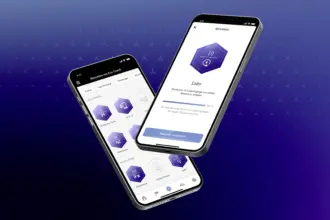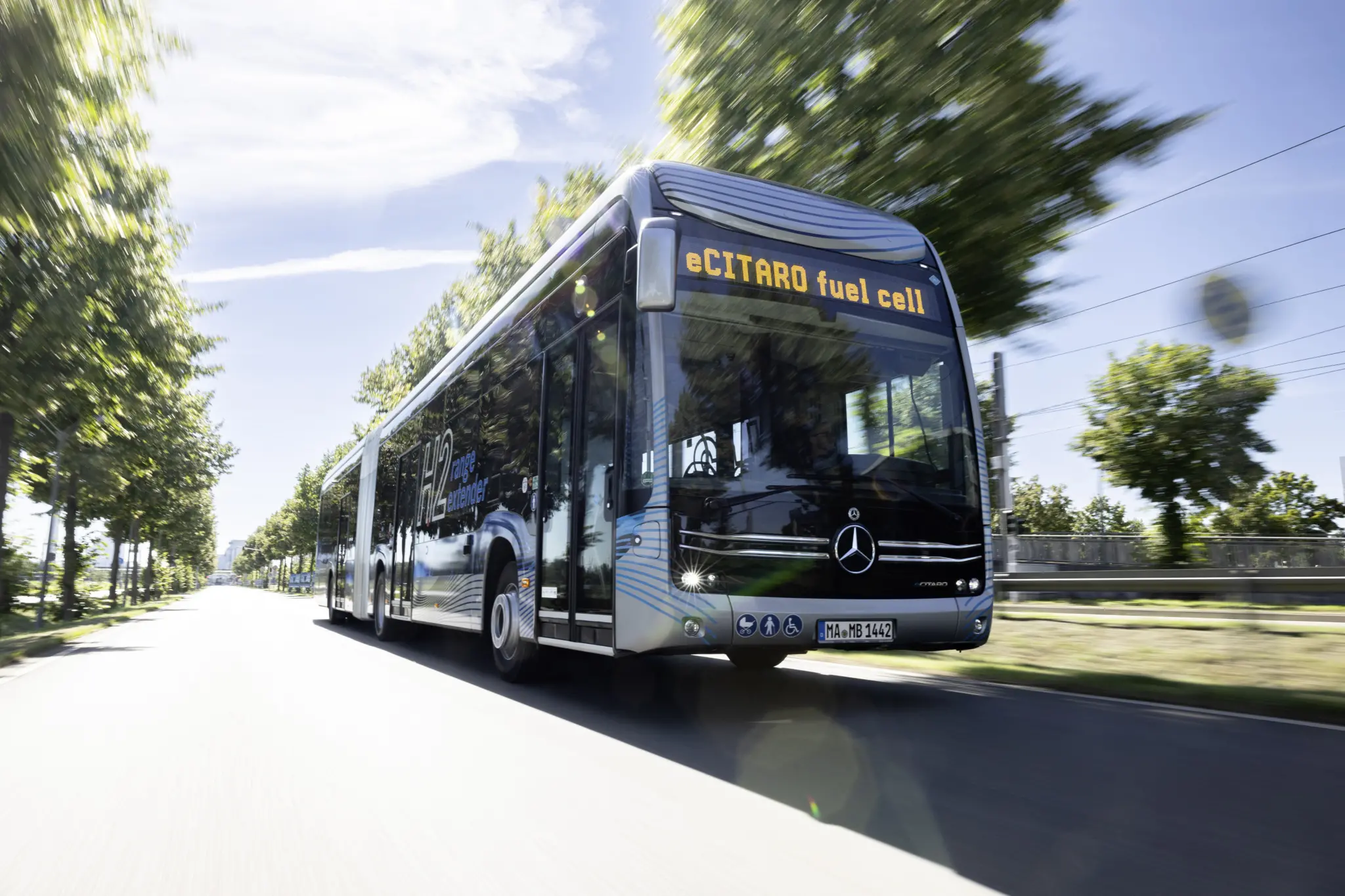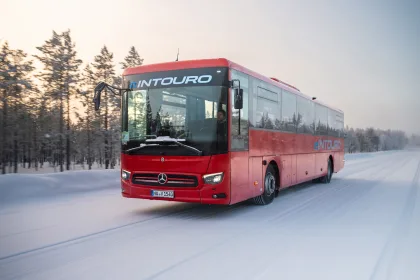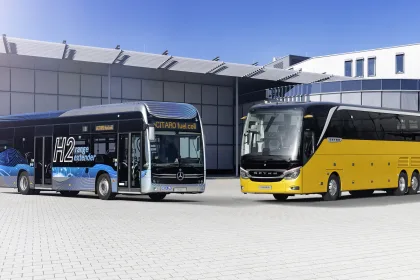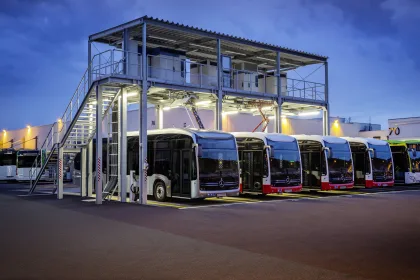- Mercedes-Benz eCitaro G fuel cell – high passenger capacity and long range
- The NMC3 high-performance batteries and fuel cell increase range to up to 400 kilometres on a single charge
- Safety features and equipment in the passenger compartment leave nothing to be desired
- Comfortable workplace for the driver
- Daimler Buses Solutions: turnkey e-mobility ecosystems from a single source
- Omniplus: digital services for greater fleet efficiency and safety
At mobility move 2024, the electric bus conference with associated trade fair of the Association of German Transport Companies (VDV), held from 5th to 7th March in Berlin, bus manufacturer Daimler Buses will be showcasing comprehensive and sustainable solutions for the electromobility of today and tomorrow. The event is considered a significant industry meeting, where professionals from transport operators across Germany gather annually to stay informed and exchange ideas about the latest developments and electromobility solutions.
This year at mobility move, Daimler Buses will, for the first time, be presenting a Mercedes-Benz eCitaro G fuel cell, an electric articulated bus with a hydrogen fuel cell as a range extender. At the booth in Convention Hall II of the Estrel Hotel Berlin, industry visitors can also learn about the extensive digital service offering from Omniplus On as well as the e-mobility systems from Daimler Buses Solutions. On 6th March at 2:15 p.m., Nils Richert, Head of Sales and Projects eSystems DACH for eMobility and charging infrastructure at Daimler Buses Solutions, will give a presentation on “Overall design for the transition to alternative drives”.
Mercedes-Benz eCitaro G fuel cell: high passenger capacity and long range
The centrepiece of Daimler Buses’ booth at mobility move 2024 in Berlin is the Mercedes-Benz eCitaro G fuel cell, the first battery-electric articulated bus with a fuel cell to extend its range. The exhibition vehicle stands out with its distinctive design and elegant anthracite metallic paintwork.
NMC3 high-performance batteries and fuel cell increase range to up to 400 kilometres on a single charge
The three-door electric articulated bus with a fuel cell range extender showcased in Berlin is equipped with four battery packs featuring the latest-generation lithium-ion batteries (NMC3) with a total battery capacity of 392 kWh. A three battery pack version is also available. NMC3 batteries have a very high energy content and are highly durable. Charging is done using charging sockets positioned on the right and left above the front wheel. Optionally, a charging socket at the front or rear is also possible. The maximum charging output is 150 kW.
The hydrogen supply for the 60 kW fuel cell is provided by six H2 cylinders (optionally seven) each with a capacity of five kilograms, which are installed on the vehicle roof of the front section. The hydrogen tanks are refuelled on the right side above the second axle in the direction of travel. Thanks to the combination of high-performance batteries and fuel cell, the eCitaro G fuel cell achieves a range of around 400 kilometres without needing to recharge.
Both the centre and rear axles of the articulated bus are powered. The propulsion is provided as standard by two low-floor portal axles with electric motors located close to the wheels. The electric motors deliver 141 kW per wheel and achieve a torque of 494 Nm. This results in an outstanding torque of 11,000 Nm per wheel thanks to a fixed gear ratio. This ensures high traction and excellent performance even on challenging inclines.
Safety and equipment of the passenger compartment leave nothing to be desired
Safe, comfortable and environmentally friendly: the extensive equipment of the eCitaro G fuel cell low-floor city bus, painted in anthracite metallic, is sure to convince both passengers and drivers alike. Attractive design both inside and out, kneeling and body lifting system, large destination displays, tyre pressure monitoring (TPM), rain-light sensor, as well as LED technology for low and high beams, cornering lights, front fog lamps, and daytime running lights are just a few examples. Thanks to the rooftop installations of battery modules, fuel cell, and hydrogen system, the eCitaro G fuel cell also comes as standard with a roll and pitch control system for the chassis.
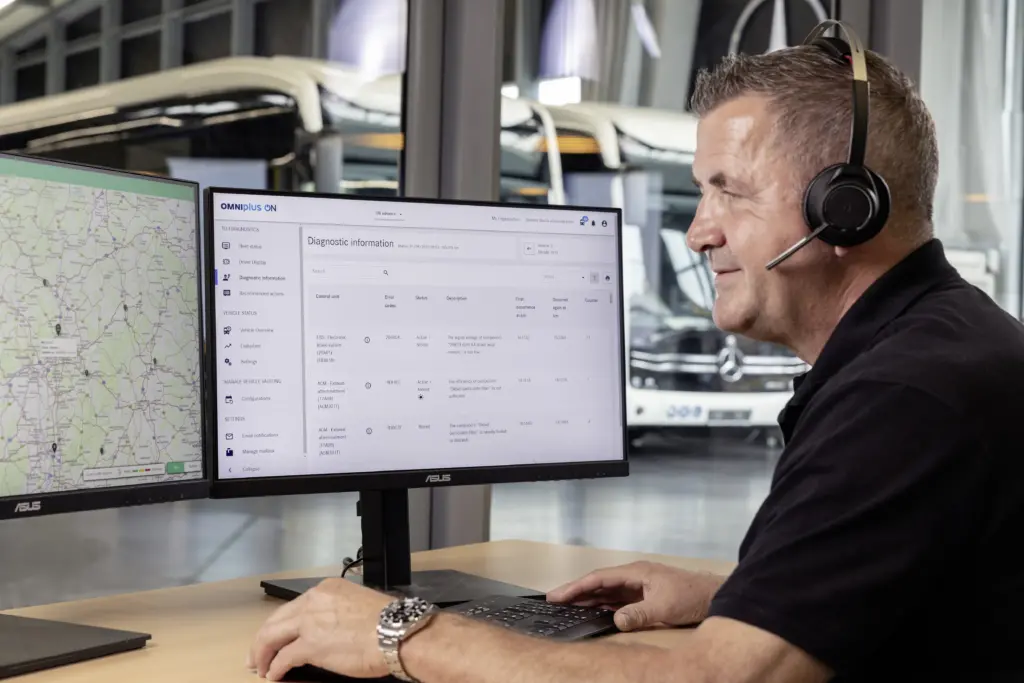
The safety equipment in the electric articulated bus eCitaro G fuel cell at mobility move 2024 also includes a variety of state-of-the-art assistance systems. In addition to the standard Electropneumatic Brake System (EBS) and Traction Control System (ASR), Sideguard Assist and Preventive Brake Assist (PBA) contribute to enhanced safety. Sideguard Assist supports the driver when turning and changing lanes by detecting pedestrians or cyclists in the blind spot next to the bus and issuing a warning the driver. Preventive Brake Assist is the world’s first active braking assistant for city buses. The exhibition bus is also equipped with an Acoustic Vehicle Alerting System (AVAS), which alerts pedestrians to the otherwise nearly silent operation of the eCitaro G fuel cell through sound. The 270° camera system also contributes to safety, allowing the driver to see the area immediately behind and beside the vehicle during manoeuvring and in tight spaces.
Three electric inward swivelling doors provide access to the passenger compartment. This is air-conditioned fully automatically as standard by the highly efficient EvoThermatic°basic system with heat pump and an active filter with antiviral function, as well as additional filters for the blower heaters, all fully automated. Passengers can relax on 47 City Star Eco seats manufactured in-house. Grab bars, some in Evo Steel, orange ceiling hand rails, and the designer interior ceiling with innovative lighting provide visual highlights. Passengers are kept informed on 29-inch TFT screens. They can connect and use their own portable devices at a total of 15 twin USB ports.
Comfortable driver’s workplace
In the Cockpit City, the driver takes a seat behind a compartment door with a fully glazed partition. They benefit from an air-conditioned driver’s seat with memory function and lumbar support. The cockpit offers the familiar layout found in every Citaro and eCitaro. In the instrument panel, instead of the usual rev counter, a power meter displays the energy flow of the eCitaro G fuel cell, and another indicator shows the fill level of the hydrogen tanks as a percentage.
Daimler Buses Solutions: turnkey eMobility ecosystems from a single source
“Out with combustion engines, in with electromobility”°- the transformation isn’t as simple as it sounds. If transport operators want to successfully use electric buses, they need to take a holistic view of their electric mobility system. Daimler Buses Solutions GmbH has therefore consistently specialised in the design and construction of electromobility infrastructure.
On request, Daimler Buses, in collaboration with the experts from Daimler Buses Solutions GmbH, provides the entire e-mobility ecosystem as a turnkey solution, all from a single source. The range extends from individually configured electric buses to software-backed feasibility studies and the complete e-mobility infrastructure for the depot, including the necessary construction measures, electrical installations, chargers, battery storage, charging management systems and other digital services. Portfolio services also include those related to the infrastructure needed to operate buses with hydrogen-based fuel cell drives or range extenders. With customers throughout Europe and, working with its partners, the company provides the complete infrastructure for electromobility from a single source. And a further speciality: if requested by customers, electrified depots can be constructed or converted for other brands.
Omniplus: digital services for greater fleet efficiency and safety
Omniplus, the service brand of Daimler Buses, presents new and proven service solutions in Berlin. These include eBasic and ePremium eService contracts specially designed for electric buses, which offer different repair scopes in addition to vehicle maintenance and the high-voltage components. These also include digital services, which have become indispensable tools for many bus operators to improve the availability and efficiency of their fleets. They are gaining increasing importance in the transition to electromobility. The Omniplus On portal offers comprehensive digital services through its four pillars: “Omniplus On advance” for analyzing vehicle data and improving availability, “Omniplus On monitor” for consumption analysis and fleet management, “Omniplus On drive” for driver support, and “Omniplus On commerce” for procurement management. These services can be selected to meet operators’ requirements.
Omniplus is constantly expanding these digital services. For instance, Omniplus On Uptime Pro, the new offering for companies with their own workshop, enables remote diagnostics via an online data interface, thus increasing fleet availability. The new Omniplus On Performance Analysis service enables an optimization of drivers’ economic and safe driving. The system evaluates typical actions such as acceleration, braking, smooth driving, and coasting for each driver, thus illustrating improvement potentials. Also new is the remote-controlled charging management system, Remote Charge Control, for electric buses. It reduces the burden on charging infrastructure and preserves the batteries by optimally controlling the charging process according to the operational requirements of each bus.
For transport companies with mixed fleets who do not use the Omniplus On portal, Omniplus offers individually bookable Omniplus On Data Packages. These packages enable the integration of vehicle data into existing fleet management and control systems from third-party providers.
Daimler Buses is one of the first vehicle manufacturers in Europe to offer its customers a data interface for remote bus monitoring, certified according to the universal international ITxPT standard: the virtual data interface TiGR (Telediagnostic for intelligent Garage in Real-time). Thanks to the harmonised interface with a universal transmission protocol, transport operators can now simplify vehicle analysis and obtain a homogeneous data basis for the entire fleet.

